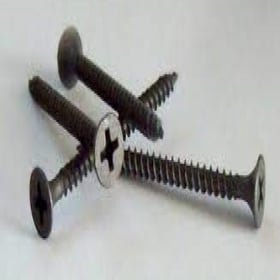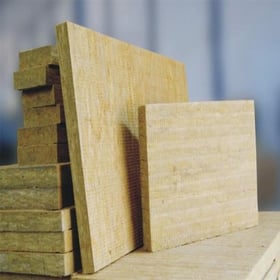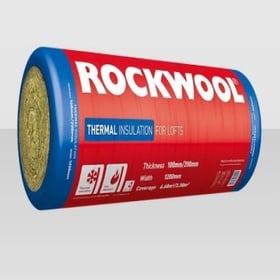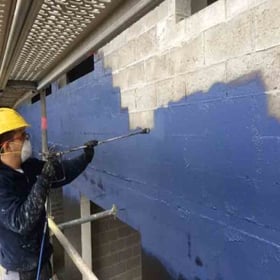DPM And Building Membranes
A damp proof membrane (DPM) is essential in the world of construction and building materials. This critical product, often comprised of sheeting or concrete, prevents moisture and water from penetrating floors and walls. It is widely used as a protective coating during construction to keep structures dry and free of water damage. Damp-proof courses, which are frequently composed of high-quality materials, assess the level of protection required and aid in the maintenance of a vapour barrier within structures. Tradespeople relied these DPMs on to provide moisture protection and ensure the long-term integrity of buildings. Whether you need a DPM for a home or commercial project, the price and quality of the material can vary, making it critical to select the proper one.
No Products Available...
Similar Categories
DPM and Building Membranes: 7 Essential Solutions for Waterproofing Success
Waterproofing is a crucial aspect of any construction project, as it protects the structure and its contents from water damage, dampness, mould, and corrosion. Waterproofing also enhances the durability, comfort, and energy efficiency of the building.
However, waterproofing can be challenging, especially in areas with high moisture levels, such as basements, bathrooms, kitchens, roofs, and balconies.
That’s why you need DPM and building membranes. DPM stands for damp-proof membrane, which is a sheet of material that prevents moisture from penetrating the floor or wall. Building membranes are similar products that are used for roofs, walls, and other parts of the building envelope.
DPM and building membranes are designed to create a barrier between the structure and the external environment, preventing water ingress and vapour transmission.
But how do you choose the right DPM and building membrane for your project? What are the benefits and features of different types of membranes? And how do you install them properly to ensure waterproofing success?
In this article, we will answer these questions and more. We will introduce you to seven essential solutions for waterproofing your building with DPM and building membranes. These are:
- Polythene DPM
- Bitumen DPM
- Self-adhesive DPM
- Breathable membrane
- Vapour control layer
- Roofing felt
- EPDM rubber membrane
Let’s take a closer look at each of these solutions and how they can help you achieve waterproofing success.
Polythene DPM
Polythene DPM is one of the most common and affordable types of damp-proof membranes. It is made of high-density polyethylene (HDPE), which is a durable and flexible plastic material that resists punctures, tears, and abrasion. Polythene DPM is suitable for concrete floors and walls, as well as timber floors. It can also be used as a radon barrier to prevent the harmful gas from entering the building.
Polythene DPM is easy to install, as it comes in rolls of various sizes and thicknesses. You can cut it to fit your project dimensions and join it with tape or sealant. You should lay polythene DPM on a smooth and level surface, with at least 150 mm overlap at the joints. You should also ensure that the edges of the membrane are turned up at the walls to form a continuous barrier.
One of the advantages of polythene DPM is that it is compatible with most types of floor coverings, such as tiles, carpets, laminate, vinyl, and wood. However, you should always check the manufacturer’s instructions before installing any floor covering over polythene DPM. You may need to use an underlay or a screed to provide a stable base for the floor covering.
Bitumen DPM
Bitumen DPM is another popular type of damp proof membrane that is made of bituminous material, which is a sticky and waterproof substance derived from crude oil. Bitumen DPM is also known as asphalt or tar paper, and it has been used for waterproofing purposes for centuries. Bitumen DPM is suitable for concrete floors and walls, as well as timber floors. It can also be used as a radon barrier.
Bitumen DPM is more robust and resistant to chemicals than polythene DPM, but it is also heavier and less flexible. Bitumen DPM comes in rolls of various sizes and weights, depending on the thickness and reinforcement of the material. You can cut it to fit your project dimensions and join it with hot bitumen or cold adhesive. You should lay bitumen DPM on a smooth and level surface, with at least 100 mm overlap at the joints. You should also ensure that the edges of the membrane are turned up at the walls to form a continuous barrier.
One of the disadvantages of bitumen DPM is that it is not compatible with some types of floor coverings, such as vinyl or rubber. You may need to use an intermediate layer or a screed to separate the bitumen DPM from the floor covering. You should also avoid exposing bitumen DPM to direct sunlight or high temperatures, as it may soften or melt.
Self-adhesive DPM
Self-adhesive DPM is a type of damp-proof membrane that has an adhesive backing that sticks to the surface without the need for tape or sealant. Self-adhesive DPM is made of various materials, such as polyethylene, polypropylene, polyester, or aluminium foil. Self-adhesive DPM is suitable for concrete floors and walls, as well as timber floors. It can also be used as a radon barrier.
Self-adhesive DPM is easy and quick to install, as it eliminates the need for heating or mixing. Self-adhesive DPM comes in rolls of various sizes and thicknesses. You can cut it to fit your project dimensions and join it by overlapping the edges. You should lay self-adhesive DPM on a clean and dry surface, with at least 50 mm overlap at the joints. You should also ensure that the edges of the membrane are turned up at the walls to form a continuous barrier.
One of the benefits of self-adhesive DPM is that it creates a strong and seamless bond with the surface, preventing any gaps or leaks. Self-adhesive DPM is also compatible with most types of floor coverings, as long as the surface is smooth and level. However, you should always check the manufacturer’s instructions before installing any floor covering over self-adhesive DPM.
Breathable membrane
A breathable membrane is a type of building membrane that is used for roofs, walls, and attics. Breathable membrane is made of synthetic or natural fibres that allow water vapour to pass through, but prevent liquid water from penetrating. The breathable membrane is also known as a vapour permeable membrane or air barrier membrane, and it is designed to improve the thermal performance and air quality of the building.
The breathable membrane is suitable for pitched roofs, timber frame walls, and loft conversions. It can also be used as a wind barrier or a fire barrier. Breathable membrane comes in rolls of various sizes and weights, depending on the material and the application. You can cut it to fit your project dimensions and join it with tape or staples. You should lay a breathable membrane on a solid and ventilated surface, with at least 100 mm overlap at the joints. You should also ensure that the edges of the membrane are fixed to the rafters or studs to form a continuous barrier.
One of the advantages of a breathable membrane is that it reduces the risk of condensation and mould growth in the building, as it allows excess moisture to escape. A breathable membrane also enhances the insulation value and soundproofing of the building, as it prevents air leakage and heat loss. However, you should always use a breathable membrane in conjunction with adequate ventilation and insulation systems to ensure optimal performance.
Vapour control layer
The vapour control layer is a type of building membrane that is used for roofs, walls, and ceilings. The vapour control layer is made of various materials, such as polyethylene, aluminium foil, or paper. The vapour control layer is also known as the vapour barrier or vapour retarder, and it is designed to prevent water vapour from diffusing into the structure and causing condensation problems.
Vapour control layer is suitable for flat roofs, metal roofs, cavity walls, and suspended ceilings. It can also be used as a radon barrier or a fire barrier. Vapour control layer comes in rolls of various sizes and thicknesses, depending on the material and the application. You can cut it to fit your project dimensions and join it with tape or glue. You should lay vapour control layer on a smooth and dry surface, with at least 150 mm overlap at the joints. You should also ensure that the edges of the membrane are sealed to the structure to form a continuous barrier.
One of the benefits of vapour control layer is that it protects the structure and its contents from moisture damage, dampness, mould, and corrosion. The vapour control layer also improves the energy efficiency and comfort of the building, as it reduces heat loss and draughts. However, you should always use a vapour control layer in conjunction with adequate ventilation and insulation systems to ensure optimal performance.
Roofing felt
Roofing felt is a type of building membrane that is used for roofs. Roofing felt is made of bituminous material that is reinforced with fibreglass or polyester. Roofing felt is also known as tar paper or felt paper, and it is designed to provide an extra layer of protection for the roof deck and shingles.
Roofing felt is suitable for pitched roofs, flat roofs, shed roofs, garage roofs, and balcony roofs. It can also be used as an underlay for tiles or slates. Roofing felt comes in rolls of various sizes and weights, depending on the thickness and reinforcement of the material. You can cut roofing felt to fit your project dimensions and join it with nails, staples, or hot bitumen. You should lay roofing felt on a clean and dry surface, with at least 75 mm overlap at the joints. You should also ensure that the edges of the membrane are fixed to the roof deck or the eaves to form a continuous barrier.
One of the advantages of roofing felt is that it provides a waterproof and weatherproof layer for the roof, preventing leaks and damage. Roofing felt also adds some insulation and soundproofing value to the roof, as it reduces heat loss and noise transmission. However, you should always use roofing felt in conjunction with suitable roof coverings, such as tiles, slates, shingles, or metal sheets, to ensure optimal performance.
EPDM rubber membrane
EPDM rubber membrane is a type of building membrane that is used for roofs. EPDM stands for ethylene propylene diene monomer, which is a synthetic rubber material that has excellent resistance to weathering, ageing, ozone, and UV rays. EPDM rubber membrane is also known as rubber roof or rubber sheet, and it is designed to provide a long-lasting and low-maintenance solution for flat roofs and low-slope roofs.
EPDM rubber membrane is suitable for residential roofs, commercial roofs, industrial roofs, green roofs, and solar roofs. It can also be used as an underlay for tiles or slates. EPDM rubber membrane comes in sheets of various sizes and thicknesses, depending on the application and the installation method. You can cut it to fit your project dimensions and join it with tape, glue, or mechanical fasteners.
You should lay the EPDM rubber membrane on a smooth and level surface, with at least 50 mm overlap at the joints. You should also ensure that the edges of the membrane are fixed to the roof deck or the parapet to form a continuous barrier.
One of the benefits of EPDM rubber membrane is that it provides a seamless and flexible layer for the roof, adapting to any shape and movement. EPDM rubber membrane also has a high reflectivity and emissivity, which means it reflects most of the solar radiation and emits most of the heat absorbed by the roof. This reduces the cooling load and energy consumption of the building.
However, you should always use an EPDM rubber membrane in conjunction with adequate drainage and insulation systems to ensure optimal performance.
Explore Our Product Catalog for DPM and Building Membranes
Here are some of the products that you can find on the website Buy Insulation Online:
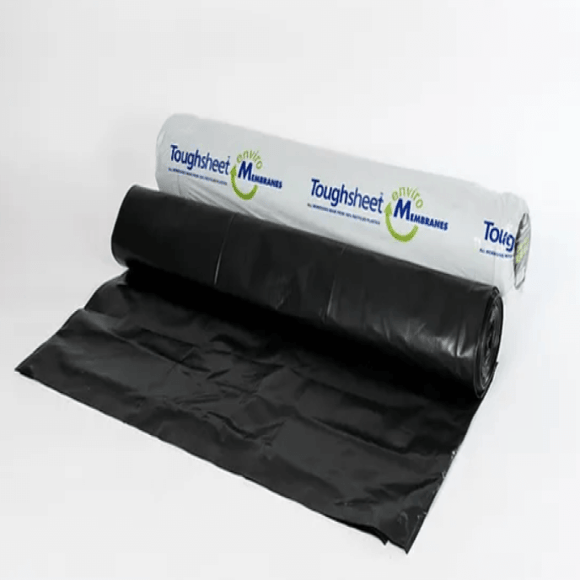 Toughsheet DPM - Dampproof Membrane - 4M Wide
Toughsheet DPM - Dampproof Membrane - 4M Wide
Toughsheet DPM is a robust 4M-wide Dampproof Membrane designed to shield your construction projects from moisture infiltration. Crafted from high-quality recycled polyethylene, it boasts BBA and PIFA certification for top-notch quality.
Ideal for new builds, refurbishments, and solid concrete ground floors, this waterproof barrier prevents water from compromising your building's integrity, ensuring a dry and healthy living environment.
It's a versatile solution for residential, commercial, and industrial buildings, including moisture-prone areas, and a reliable choice for safeguarding your structures from water damage.
Novia Polybit - Building Paper - 1M x 25M (25 Sqm)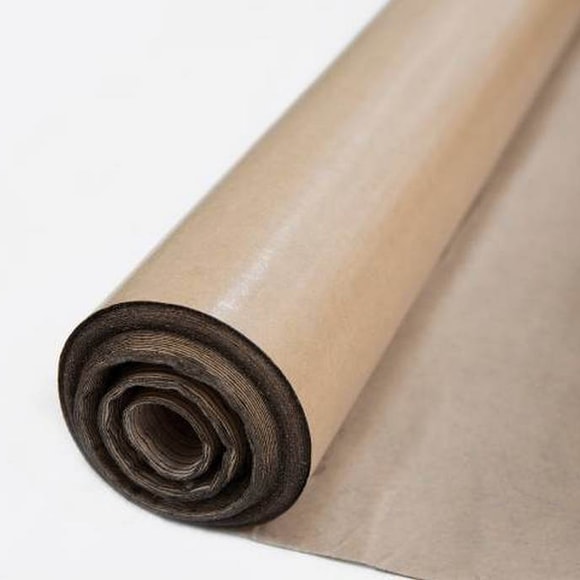
Novia Polybit Building Paper, a cutting-edge construction solution that blends traditional reinforced kraft paper with state-of-the-art building membrane advancements.
This A1F grade building paper, measuring 1M x 25M (25 Sqm), offers superior durability and moisture resistance thanks to its polythene-coated bitumen-bonded construction. It complies with the rigorous standards of BS 1521, making it a versatile choice for numerous construction applications.
From draught and damp exclusion to underlay on uninsulated cladding, floor damp-proof membranes, and heavy-duty temporary protection, Novia Polybit is the trusted go-to for professionals in the construction industry.
Its clear polythene-coated version allows for precise positioning, minimizing waste and enhancing performance. Upgrade your construction projects with Novia Polybit's unmatched strength and reliability.
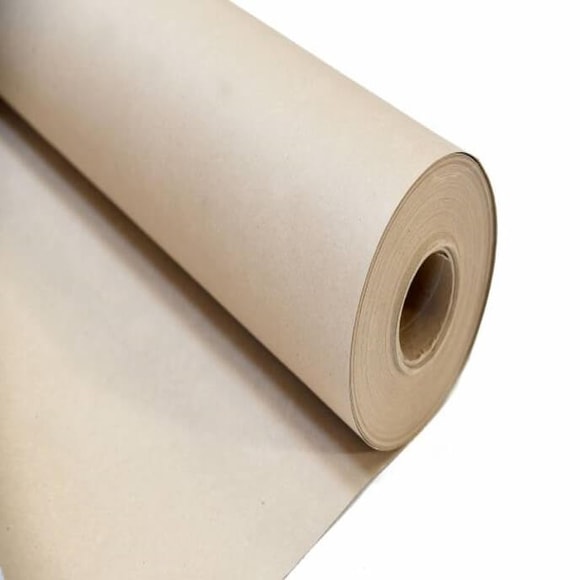 Floorguard by Novia - 1M x 50M
Floorguard by Novia - 1M x 50M
Novia Floorguard, is an essential construction companion. This versatile 1m x 50m roll of low-cost recycled cardboard provides comprehensive protection for heavily trafficked areas and new surfaces during construction.
With its customizable fit, it effortlessly conforms to awkward shapes on-site, ensuring complete coverage and preserving the quality of surfaces and finishes.
Novia Floorguard's water and slip-resistant design enhances safety, making it suitable for various surface protection needs, not just floors. Keep your project on schedule and safeguard your investments with Novia Floorguard, the go-to choice for construction professionals.
What is the difference between DPM and building membranes?
DPM and building membranes are both types of sheets of material that are used for waterproofing purposes in construction projects. However, they have some differences in their functions, applications, and materials.
DPM stands for damp-proof membrane, which is a type of membrane that prevents moisture from penetrating the floor or wall. DPM is mainly used for floors and walls in areas with high moisture levels, such as basements, bathrooms, kitchens, and ground floors. DPM is also used as a radon barrier to prevent harmful gas from entering the building. DPM is usually made of polyethylene, bitumen, or self-adhesive material.
Building membranes are types of membranes that are used for roofs, walls, and other parts of the building envelope. Building membranes are mainly used for roofs, walls, and attics in areas with low or moderate moisture levels, such as pitched roofs, timber frame walls, and loft conversions. Building membranes are also used as wind barriers, fire barriers, or vapour barriers to improve the thermal performance and air quality of the building. Building membranes are usually made of synthetic or natural fibres, aluminium foil, paper, or rubber.
In summary, DPM and building membranes are both waterproofing solutions for different parts of the building. DPM is more focused on preventing water ingress and radon gas transmission in floors and walls. Building membranes are more focused on preventing water vapour transmission and air leakage in roofs, walls, and attics.
How do I choose the right membrane for my project?
Choosing the right membrane for your project depends on several factors, such as the type of structure, the level of moisture, the type of roof covering, the budget, and the preference. Here are some general guidelines to help you choose the right membrane for your project:
For floors and walls in areas with high moisture levels, such as basements, bathrooms, kitchens, and ground floors, you should use a DPM that is made of polyethylene, bitumen, or self-adhesive material. These types of DPMs are durable and resistant to water, salts, and chemicals. They also act as radon barriers to prevent the harmful gas from entering the building. You can find our range of DPM products here.
For roofs, walls, and attics in areas with low or moderate moisture levels, such as pitched roofs, timber frame walls, and loft conversions, you should use a building membrane that is made of synthetic or natural fibres, aluminium foil, paper, or rubber.
These types of building membranes are breathable and vapour permeable, which means they allow water vapour to pass through but prevent liquid water from penetrating. They also act as wind barriers, fire barriers, or vapour barriers to improve the thermal performance and air quality of the building.
For flat roofs and low-slope roofs in areas with high exposure to weathering, ageing, ozone, and UV rays, you should use a building membrane that is made of EPDM rubber.
This type of building membrane is seamless and flexible, which means it adapts to any shape and movement. It also has a high reflectivity and emissivity, which means it reflects most of the solar radiation and emits most of the heat absorbed by the roof. This reduces the cooling load and energy consumption of the building.
Of course, these are only general guidelines and you should always consult with a professional before choosing the right membrane for your project. You should also check the manufacturer’s instructions and specifications before installing any membrane. If you have any questions or need any assistance with your waterproofing project, please feel free to contact us at Buy Insulation Online. We are happy to help you with your project.
Conclusion
Waterproofing your building is essential for protecting your structure and its contents from water damage, dampness, mould, and corrosion. Waterproofing also improves the durability, comfort, and energy efficiency of your building. However, waterproofing can be challenging, especially in areas with high moisture levels.
That’s why you need DPM and building membranes. DPM and building membranes are sheets of material that create a barrier between the structure and the external environment, preventing water ingress and vapour transmission. DPM and building membranes are available in various types, materials, sizes, and applications.
In this article, we have introduced you to seven essential solutions for waterproofing your building with DPM and building membranes. These are:
- Polythene DPM
- Bitumen DPM
- Self-adhesive DPM
- Breathable membrane
- Vapour control layer
- Roofing felt
- EPDM rubber membrane
We hope this article has helped you understand the benefits and features of different types of DPM and building membranes. We also hope this article has helped you choose the right DPM and building membrane for your project.
If you have any questions or need any assistance with your waterproofing project, please feel free to contact us at Buy Insulation Online. We are a leading online supplier of insulation products in the UK, including DPM and building membranes. We offer high-quality products at competitive prices, along with fast delivery and excellent customer service.
You can browse our range of DPM and building membranes here. You can also check out our blog here for more tips and advice on insulation topics.
And remember waterproofing your building is not only possible but easy with DPM and building membranes!
